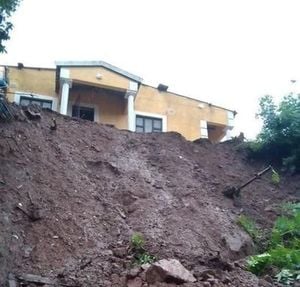SpaceX's ambitious Starship rocket system has once again failed spectacularly during its test flights, raising significant safety concerns and prompting investigations by the Federal Aviation Administration (FAA). The recent mishaps have seen both the Super Heavy booster and the upper stage of the Starship spacecraft explode shortly after liftoff, leading to debris landing on populated areas, particularly the Turks and Caicos Islands.
The latest test occurred on January 16, 2025, and followed two failed launches earlier. On this occasion, shortly after launch from Boca Chica, Texas, the upper stage of the Starship broke apart, scattering debris across the North Atlantic Ocean. Witnesses described the sight as astonishing, recalling blazing orange and white streaks illuminating the sky. One resident remarked, "At first, I thought it was an actual plane..." The debris fallout, including parts of Starship's heat shield, raised alarms among the local population and tourists.
SpaceX's strategy of rapid iterative development, which focuses on aggressive testing and acceptance of failure to quickly improve technology, has faced criticism due to the proximity of test flights to populated areas. Local residents expressed concerns about safety and the lack of communication from SpaceX after the January 16 incident. "I’m... disappointed by the response from SpaceX," said Amos Luker, who operates a rental business on Providenciales. "There’s not been big warnings going out whatsoever," he added.
On November 18, during another test flight, the Super Heavy booster experienced issues following the controversial 'hot staging' separation technique, which led to another explosion and loss of control shortly after liftoff. This testing method was new and involves the upper stage igniting its engines before fully detaching. Following the explosions, SpaceX officials stated, "With a test like this... success is what we learn..." indicating the company’s perspective on mishaps as learning opportunities.
The fallout from the January test left debris scattered across the Turks and Caicos, leading to questions about the safety protocols of such test launches. The FAA emphasized during this investigation it had mandated SpaceX to map out possible hazard areas, indicating the safety measures taken prior to the launch. "No Caribbean islands exceeded this threshold," the FAA noted, trying to alleviate public anxiety.
Debris has washed up on beaches from Providenciales to South Caicos, raising environmental concerns, especially considering the nature of rocket components, which can potentially contain hazardous materials. "Space objects... can sometimes contain hazardous materials which can cause serious harm to health," warned local authorities. Although officials later confirmed no highly toxic propellant, hydrazine, was involved, questions about the safety of other materials lingered.
The incident has prompted local calls for accountability, with residents noting the delay and lack of clarity from SpaceX over handling debris. "You need to come pick this up," one local resident demanded, highlighting the growing frustration over how SpaceX has managed the situation post-incident.
NASA's involvement extends beyond the interested partnership; the agency is heavily invested in the success of the Starship program with aspirations to use the spacecraft for lunar missions. After the recent test flight, NASA Administrator Bill Nelson commended the efforts by SpaceX's teams and encouraged perseverance. "Each test brings us closer to the milestones of returning humans to the Moon..." he emphasized, reaffirming the joint goal of human exploration beyond Earth.
Looking to the horizon, many are left pondering the balance between safety and innovation as SpaceX continues its aggressive testing regime. Innovations like 'hot staging,' once thought to be the future of space travel, now draw scrutiny due to mishaps. Still, SpaceX persists with its belief: "Success is what we learn from these tests," aiming to pave the way for the next generation of space exploration.
Nevertheless, the consistent failures resulting from this rapid approach have sparked serious discussions on launching risks. Local residents questioning, "Is this safe?" reflects widespread concern about the potential for disasters occurring closer to home.



